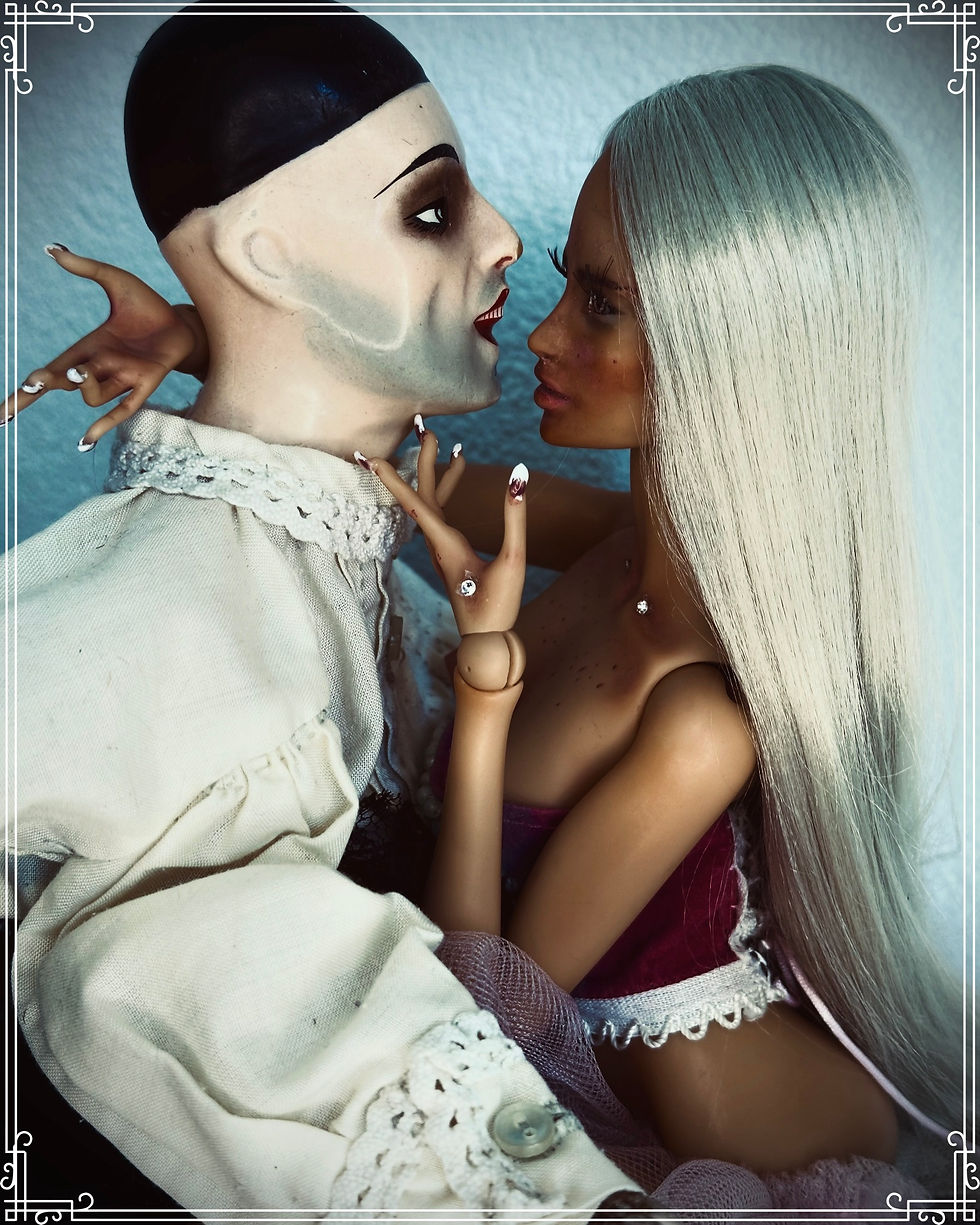French antique dolls. Are you sure?
- talamacska
- Jul 21, 2024
- 2 min read
Updated: Aug 10, 2024
For some reason, the common belief about antique, elegant, valuable, and chic things is that they come from France or originate from France.
This is especially true for the intricately crafted wax dolls from the early 1900s.
It is very, very common that the snobbish-looking, Victorian-wigged, pearl-adorned, stylish 100-120year old lady actually doest come from there,
but from another country: Austria.
Antique poured wax or wax-over dolls, are unique collectible items that gained popularity in the late 19th and early 20th centuries.
These dolls typically feature a porcelain or chalk base covered with a thin layer of wax. The wax gives the dolls a more realistic, soft appearance, mimicking human skin better than plain porcelain.
Many wax-over half dolls are adorned in elaborate period clothing, made from fine fabrics like silk and lace. Accessories such as hats, jewelry, and parasols were also common with hand painted details.
The production of wax-over half dolls began in the late 1800s, primarily in Germany and France. Became popular household items in Europe and America as well. They were not only decorative but also functional, often integrated into everyday household objects.
Austrian doll makers were prominent in the production of wax over half dolls, contributing to the rich heritage of doll craftsmanship in Europe. These brands are celebrated for their exquisite detailing and high-quality materials.
Elka, "Erste Lichtenwörther Keramik und Antik-Porzellanmanufaktur," was an Austrian brand known for its fine ceramic and porcelain works, including dolls. Established in the early 20th century, Elka became synonymous with high quality craftsmanship.
Dolls in excellent condition, particularly those with original clothing and accessories, are especially prized by collectors.
Due to the delicate nature of the wax overlay, finding Elka dolls in pristine condition can be challenging, making well-preserved examples highly desirable.
Wiener Künstlerkopf, was a brand associated with high artistic quality in doll making, emerging in Vienna during the early 20th century. These dolls are celebrated for their artistic and lifelike qualities.
These dolls often showcased intricate details, such as individually molded and painted fingers, elaborate hairstyles, and accessories like hats and jewelry, reflecting the fashion and culture of the time.
Wiener Künstlerkopf dolls are highly sought after by collectors due to their artistic value and the precision of their craftsmanship. Dolls in excellent condition with original outfits and accessories are particularly valuable.
TKB (TH. Kärner & Bielawsky) is a notable Austrian brand gained a reputation for producing exquisite porcelain items, including dolls, figurines, and decorative objects. Their work often reflected the artistic movements of the time, incorporating elements of Art Nouveau and later, Art Deco.
TKB dolls are highly valued by collectors due to their artistic quality and the precision of their craftsmanship. Dolls in excellent condition with original clothing and accessories are particularly prized.
The dolls in the photos below are all made in Austria.
(private collection)

(2 different Wiener Künstlerkopf model with Austrian tracht Goldhaube hat)

(Wiener Künstlerkopf)

(Wiener Künstlerkopf)

(2 Elka)

(Elka)

(Very rare Wiener Künstlerkopf with ballet feet and costume)

(TKB Pierrot wit modern 1/4 bjd doll)

(TKB and Elka)

(Wiener Künstlerkopf, Elka, TKB )


(finally: they are German dolls, but Austrian roots because founder of the Baitz company - Elisabeth Margaretha Schreiber - was Austrian)
Commentaires